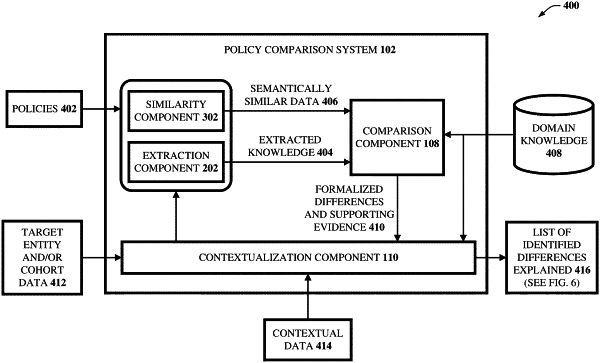| CPC G06Q 50/18 (2013.01) [G06N 20/00 (2019.01); G06Q 40/08 (2013.01)] | 20 Claims |

|
1. A system, comprising:
a processor that executes computer executable components stored in memory, the computer executable components comprising:
an extraction component that generates, via artificial intelligence that employs natural language processing, training data comprising historical usage pattern data based on extracted data associated with entities from policy data from different government policies, and based on domain knowledge of a governmental domain associated with the different policies, wherein the historical usage pattern data comprises at least one of historical claims data, historical policy holder data, or contextual data;
a comparison component that trains, using the training data, a neural network model to contextually compare semantics of conditions in the policy data of the different government policies based on features of the entities and the historical usage pattern data, and generate contextual explanations of how respective conditions in two different policies of the different policies are semantically different; and
a contextualization component that employs the neural network model to provide to an entity of the entities a contextual explanation of how a first condition in first policy data of a first government policy of the different government policies is semantically different from a second condition in second policy data of a second government policy of the different government policies based on a feature of the entity.
|